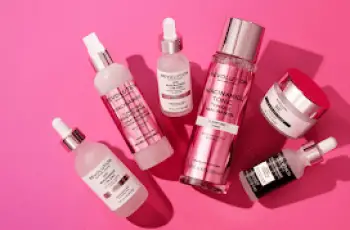
Can Matrixyl and Vitamin C be used together?
Some skincare ingredients are simply made to work together. Vitamin C and Matrixyl are certainly an ideal combination, as they both offer unique benefits to the skin and work together to improve the skin’s overall appearance. The difference is that Matrixyl is a unique peptide that has its own set of rules when it comes to skincare.
That leaves the question of how to use Matrixyl and Vitamin C together. We’ll dive into this in depth in today’s blog post, so stay tuned if you want to learn more.
What is Matrixyl?
Matrixyl is a synthetically formulated peptide that is used in a variety of skincare formulations. It’s been called Botox in a bottle and is often found in some of the most effective anti-aging skincare products.
Peptides work by building upon a series of amino acids to create a foundation that helps skin look younger and healthier, in addition to boosting collagen production to significantly reduce signs of aging like fine lines and wrinkles. You’ll also notice a reduction in the loss of elasticity and sagging of the skin, especially in areas like the chin.
Another benefit of Matrixyl is that it stimulates the production of hyaluronic acid. The right amount of hyaluronic acid in the body ensures that moisture is drawn into the skin and locked there. This makes the face look plumper, firmer and more youthful. This is definitely an ingredient to include in your daily routine, especially if you want to target problem areas like fine lines and wrinkles.
What is Vitamin C?
Vitamin C is considered one of the most potent antioxidants, providing comprehensive protection and preventing oxidative stress. This skin stress can be caused by environmental factors such as exposure to UV rays, pollution, central heating and harsh climates.
Once these issues are present, you will notice a lot of damage to your skin, such as areas of hyperpigmentation, patchy areas of skin and an overall dull complexion. Vitamin C not only prevents further damage, but also helps to minimise its appearance. For example, over time, pigmentation will become lighter and less noticeable to the naked eye, but the pigment will not become darker after prolonged exposure to the sun.
If you want to learn more about Vitamin C and how it works, read our special blog post on this clever power.
What not to mix with Matrixyl?
Peptides are notoriously unstable ingredients, so it is important to fully understand how the best active ingredients work together to achieve the best results. Ingredients such as medical-grade vitamin C and copper peptides should be avoided as they can both have the opposite effect and even reduce the effectiveness of Matrixyl.
Other effective active ingredients that should be avoided in combination with Matrixyl include alpha hydroxy acids (AHA) and beta hydroxy acids (BHA), especially the popular glycolic acid and salicylic acid. Both are effective peels, but may increase the risk of irritation when combined with Matrixyl.
Can Matrixyl be used with vitamin C?
You can do this, but only if you allow enough time between applications. Expect around 30 minutes for the pH of the skin to balance and stabilize again. It is important not to layer these ingredients as this may increase sensitivity and irritation on the surface of the skin.
Another way to use vitamin C with Matrixyl is to alternate between applying the two substances to the skin. You can use it in the morning and evening, but many people find that the radiant effect they get from using vitamin C is too much to resist at night. Try using vitamin C in your morning routine and Matrixyl in your evening routine. This will help you avoid unwanted reactions or irritation to your skin, while helping it to regenerate, regenerate and repair.
Is Matrixyl Better Than Vitamin C?
As I mentioned before, both Matrixyl and Vitamin C are very effective ingredients for your skin. Whether used in combination or alone, you can be sure that both will significantly improve your skin. The question of which is better can seem a little complicated, as both have similar positive effects on the skin.
These similarities are that both contain antioxidants that ensure the skin surface and its lipid barrier are fully protected from environmental influences such as UV rays, pollution, central heating and other pollutants. Addressing skin issues such as discoloration, dark spots, pigmentation and sun damage.
You will also find that Matrixyl can fight issues such as fine lines, wrinkles and other signs of premature ageing, leaving your skin firmer, brighter and with improved texture and feel. This is something that Vitamin C lacks, but as I suggested, you can combine these two active ingredients in your daily routine, remembering to leave enough time between applications.
Is Matrixyl the same as Retinol?
Believe it or not, Matrixyl has been nicknamed the “gentle alternative to retinol” because it can provide similar effects to the powerful powerhouse for the skin. Matrixyl stimulates the production of collagen and elastin, properties associated with retinol and other retinoid derivatives. You’ll also find that Matrixyl can target fine lines and wrinkles, helping to improve skin texture for a more vibrant, younger-looking appearance.
The beauty of Matrixyl and retinol is that you can combine the two to create a powerful duo. If you choose to use it with other hydrating ingredients like hyaluronic acid, you can avoid the dryness or irritation that often results from using retinol.
I recommend that if you are not familiar with any of the ingredients mentioned, you should first consult with your doctor or dermatologist to ensure that these ingredients are appropriate for your skin and will achieve your skin goals. Don’t forget to visit us on Instagram if you have any additional questions.


